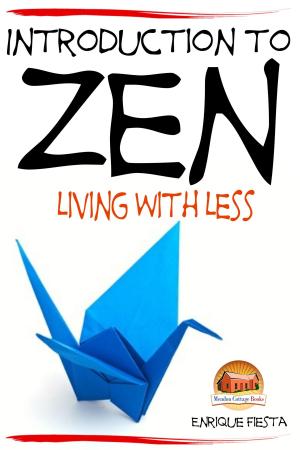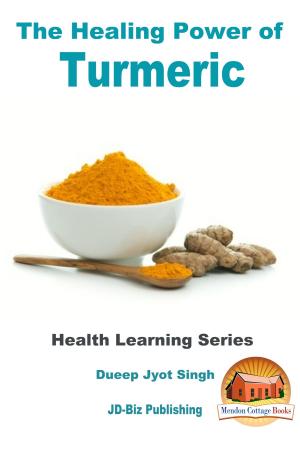The Magic of Barley
Nonfiction, Health & Well Being, Health, Nutrition & Diet, Food Content Guides, Healthy Living| Author: | Dueep Jyot Singh | ISBN: | 9781311163790 |
| Publisher: | Mendon Cottage Books | Publication: | May 29, 2016 |
| Imprint: | Smashwords Edition | Language: | English |
| Author: | Dueep Jyot Singh |
| ISBN: | 9781311163790 |
| Publisher: | Mendon Cottage Books |
| Publication: | May 29, 2016 |
| Imprint: | Smashwords Edition |
| Language: | English |
Table of Contents
Introduction
Trying Your Hand at Barley Beer
Barley As a Staple Diet
Tsampa
Traditional Barley Water
Traditional Barley Winter Soup
Barley for Beauty
Barley As a Skin Whitener
Traditional Asthma Cure
Barley for Treating Burns
Rashes and Eczema
Diabetes
Conclusion
Author Bio
Publisher
Introduction
I was just listening to an old traditional English song John Barleycorn , describing the traditional cultivation of this most important food grain and began to wonder, how, I did not know anything much about barley, even though I consider myself a botanist with a good knowledge of cereals, greens, plants, herbs, and other precious gifts of nature to mankind. And then I began to wonder whether I had been seeing barley, throughout my life, but it was not registering consciously.
And then, I was talking to a horticultural professor friend, asking him the difference between oats and barley, and he told me that both are totally different. Oats are cereals, and their grains are used for fodder and for food. The scientific name of oats is Avena Sativa. Today, we commonly use them for breakfast food, in the form of oatmeal, porridge, flour for biscuits, and cookies, especially when it is mixed up with flour of other grains like wheat. And of course granola cannot do without oats. And like cereals like rice and barley, fermented oats are capable of producing beer, as mankind found millenniums ago.
In fact, when I was reading the old English origin and etymology of barley, it was then called bære. And in many parts of Asia, the ancient as well as modern-day equivalent is baajra, but it is used for millet. Was it possible that I knew what barley was, but because I did not know the traditional, local or vernacular name, I was confusing it with some other cereal? This much, I know that the grass family, also known as Gramineae produced the grain, which has been the important medium of survival for animals and humanity. Ever since the world began, mankind has survived on six important cereals present all over the world wheat, rye, rice, maize, oats, and barley. All of the cereals were very rich in vitamins, fats, proteins, as well as carbohydrate content. Today the word grain is synonymous with the product of the member of the family Graminae or the cereal plant itself. And here I was, I recognized wheat, rice, maize (also known as corn), oats, and rye.
But in many parts of Eurasia, I came across another cereal, which was called Millet. It took me around 40 years to understand the difference between barley and millets, especially when I was just looking at the spikelets, even though millets also happen to be cereals.
Table of Contents
Introduction
Trying Your Hand at Barley Beer
Barley As a Staple Diet
Tsampa
Traditional Barley Water
Traditional Barley Winter Soup
Barley for Beauty
Barley As a Skin Whitener
Traditional Asthma Cure
Barley for Treating Burns
Rashes and Eczema
Diabetes
Conclusion
Author Bio
Publisher
Introduction
I was just listening to an old traditional English song John Barleycorn , describing the traditional cultivation of this most important food grain and began to wonder, how, I did not know anything much about barley, even though I consider myself a botanist with a good knowledge of cereals, greens, plants, herbs, and other precious gifts of nature to mankind. And then I began to wonder whether I had been seeing barley, throughout my life, but it was not registering consciously.
And then, I was talking to a horticultural professor friend, asking him the difference between oats and barley, and he told me that both are totally different. Oats are cereals, and their grains are used for fodder and for food. The scientific name of oats is Avena Sativa. Today, we commonly use them for breakfast food, in the form of oatmeal, porridge, flour for biscuits, and cookies, especially when it is mixed up with flour of other grains like wheat. And of course granola cannot do without oats. And like cereals like rice and barley, fermented oats are capable of producing beer, as mankind found millenniums ago.
In fact, when I was reading the old English origin and etymology of barley, it was then called bære. And in many parts of Asia, the ancient as well as modern-day equivalent is baajra, but it is used for millet. Was it possible that I knew what barley was, but because I did not know the traditional, local or vernacular name, I was confusing it with some other cereal? This much, I know that the grass family, also known as Gramineae produced the grain, which has been the important medium of survival for animals and humanity. Ever since the world began, mankind has survived on six important cereals present all over the world wheat, rye, rice, maize, oats, and barley. All of the cereals were very rich in vitamins, fats, proteins, as well as carbohydrate content. Today the word grain is synonymous with the product of the member of the family Graminae or the cereal plant itself. And here I was, I recognized wheat, rice, maize (also known as corn), oats, and rye.
But in many parts of Eurasia, I came across another cereal, which was called Millet. It took me around 40 years to understand the difference between barley and millets, especially when I was just looking at the spikelets, even though millets also happen to be cereals.















